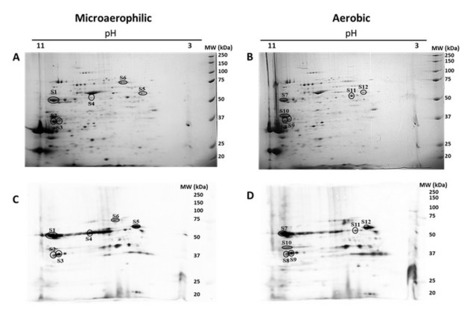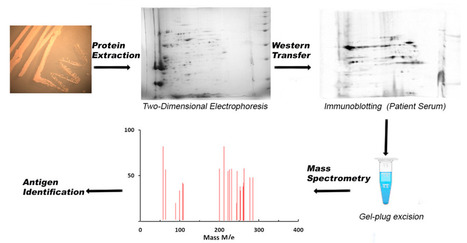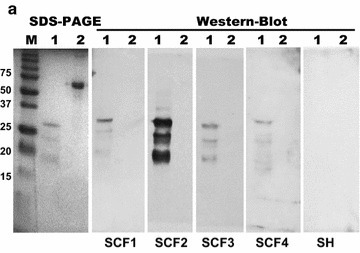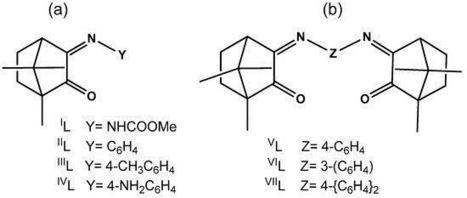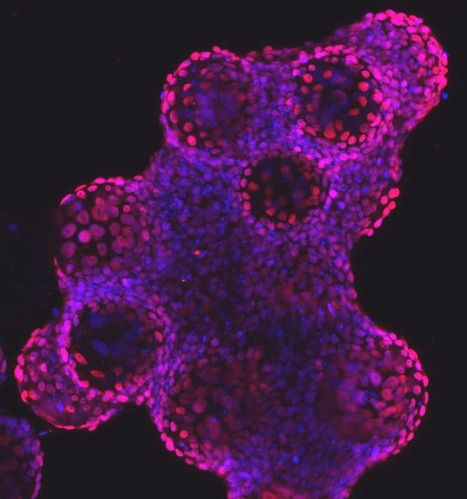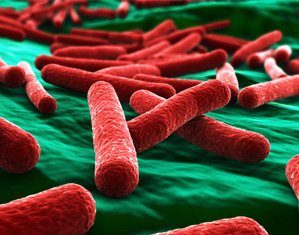 Your new post is loading...
 Your new post is loading...

|
Scooped by
iBB
April 13, 2023 10:41 AM
|
Antitumoral and Antimicrobial Activities of Block Copolymer Micelles Containing Gold Bisdithiolate Complexes
Gold(III) bisdithiolate complexes have been shown as potential antimicrobial and antitumoral agents. In particular, the complex [Au(cdc)2]− (cdc=cyanodithioimido carbonate) displayed antimicrobial and outstanding antitumor activity against the ovarian cancer cells A2780 and A2780cisR, which are sensitive and resistant to cisplatin, respectively. Yet, poor water solubility may hinder its clinical use. Block copolymer micelles (BCMs) have demonstrated great potential as nanocarriers capable of delivering hydrophobic drugs, increasing their solubility and stability, and improving their bioavailability and circulation time in blood, with reduced side effects. In this work, published in the journal Pharmaceutics, the potential of BCM-[Au(cdc)2] as a novel drug-delivery system was addressed. The BCM-[Au(cdc)2] micelles were prepared with a loading efficiency of 64.6% and a loading content of 35.3 mg [Au(cdc)2]−/gBCM, they were also homogenous and good candidates for drug delivery. Cytotoxic activity studies against A2780/A2780cisR cells showed that BCM-[Au(cdc)2] maintained relevant cytotoxic activity comparable to the cytotoxicity observed for the same concentration of gold complexes. The Au uptake in A2780 cells, determined by PIXE, was ca. 17% higher for BCMs-[Au(cdc)2] compared to [Au(cdc)2]−. The BCMs-[Au(cdc)2] presented also antimicrobial activity against S. aureus Newman and C. glabrata CBS138. In summary this paper shows the results of the potential of BCM-[Au(cdc)2] for drug delivery and its promising anticancer and antimicrobial activities. This study was led by Dr. Célia Fernandes and Dr. Fernanda Marques, both from Centro de Ciências e Tecnologias Nucleares, Instituto Superior Técnico. The iBB members Teresa Pinheiro, Jorge Leitão and Sílvia Sousa collaborated in this work performing the cellular uptake analysis and the antimicrobial activities of BCMs.

|
Scooped by
iBB
September 5, 2019 9:03 AM
|
New Insights into the Immunoproteome of B. cenocepacia From Cystic Fibrosis Patients
Bacteria of the Burkholderia cepacia complex (Bcc) are ubiquitous multidrug resistant organisms and opportunistic pathogens capable of causing life threatening lung infections among cystic fibrosis (CF) patients. No effective therapies are available to eradicate Bcc bacteria from CF patients, as these organisms are inherently resistant to most clinically available antimicrobials. In a collaborative research work headed by BSRG members JH Leitão and SA Sousa, in collaboration with the CBMA (UMinho) team headed by Pedro Santos, and the Cystic Fibrosis center (HSM) headed by MDs C Barreto and L Pereira, an immunoproteomics approach was used to identify Bcc proteins that stimulate the humoral immune response of the CF host. The work was published in the journal New Biotechnology and reports for the first time the identification of 19 proteins as immunogenic. Ten proteins were predicted as extracytoplasmic, 9 of them being conserved in Bcc genomes. The immunogenic Bcc extracytoplasmic proteins are potential targets for development of novel therapeutic strategies and diagnostic tools to protect patients against the onset of chronic Bcc lung infections.

|
Scooped by
iBB
July 1, 2018 6:41 AM
|
Advancing the Development of Vaccines Against Bacteria of the Burkholderia cepacia complex
Bacteria of the Burkholderia cepacia complex (Bcc) remain an important cause of morbidity and mortality among patients suffering from cystic fibrosis. Eradication of these pathogens by antimicrobial therapy often fails, highlighting the need to develop novel strategies to eradicate infections. Vaccines are attractive since they can confer protection to particularly vulnerable patients, as is the case of cystic fibrosis patients. Several studies have identified specific virulence factors and proteins as potential subunit vaccine candidates. So far, no vaccine is available to protect from Bcc infections. In a recent publication in the journal Vaccines, iBB-BSRG researchers Sílvia Sousa, António M. Seixas and Jorge H. Leitão review the most promising postgenomic approaches and selected web tools available to speed up the identification of immunogenic proteins with the potential of conferring protection against Bcc infections.

|
Scooped by
iBB
June 26, 2016 5:41 PM
|
Respiratory infections by bacteria of the Burkholderia cepacia complex (Bcc) remain an important cause of morbidity and mortality among cystic fibrosis patients. In a paper recently published in AMB Express, Silvia A. Sousa and Jorge H. Leitão from BSRG-iBB, in collaboration with researchers from Helwan University (Cairo), and medical doctors from Hospitals Sta Maria and D. Estefânia (Lisbon), studied the B. cenocepacia protein BCAL2958, a member of the OmpA-like family of proteins, showing the presence of anti-BCAL2958 antibodies in sera from cystic fibrosis patients with a clinical record of respiratory infection by Bcc, and the ability of the purified protein to in vitro stimulate neutrophils. Results strongly suggest that the protein is a potential candidate for usage in preventive therapies of infections by Bcc.
|

|
Scooped by
iBB
October 25, 2019 11:22 AM
|
Antimicrobial Activity of Silver Camphorimine Complexes against Candida Strains
The synthesis of hydroxide [Ag(OH)L] (L =I VL, VL, VIL, VIIL), oxide [{AgL}2}(μ-O)] (L = IL, IIL, IIIL, VL, VIL) or chloride [AgIIL]Cl, [Ag(VIL)2]Cl complexes, obtained from reactions of mono- or bicamphorimine derivatives with Ag(OAc) or AgCl, appeared in a recent publication on the journal Antibiotics, resulting from a collaborative research involving the iBB members Jorge H. Leitão, Nuno Mira, Ana Rego and Sílvia Sousa; M. Fernanda Carvalho from CQE; and Fernanda Marques from C2TN. The new complexes were characterized by spectroscopic (NMR, FTIR) and elemental analysis. X-ray photoelectron spectroscopy (XPS), ESI mass spectra and conductivity measurements were undertaken to corroborate formulations. The antimicrobial activity of complexes and some ligands were evaluated towards Candida albicans and Candida glabrata, and strains of the bacterial species Escherichia coli, Burkholderia contaminans, Pseudomonas aeruginosa and Staphylococcus aureus based on the Minimum Inhibitory Concentrations (MIC). A significant feature of these redesigned complexes is their ability to sensitize C. albicans, a trait that was not found for the previously investigated [Ag(NO3)L] complexes. The MIC values of the complexes towards bacteria were in the range of those of [Ag(NO3)L] and well above those of the precursors Ag(OAc) or AgCl. The activity of the complexes towards normal fibroblasts V79 was evaluated by the MTT (3-[4,5-dimethylthiazol-2-yl]-2,5 diphenyl tetrazolium bromide) assay. Results showed that the complexes have a significant cytotoxicity.

|
Scooped by
iBB
July 8, 2019 4:46 AM
|
Twin Seminars on Immunoreactive Virulence Factors and Multi-organoid Systems
The 3rd Edition of iBB seminars will continue on the 8th July with short talks from Sílvia Sousa - "Exploitation of immunoreactive virulence factors to fight Burkholderia cepacia complex infections" and Cláudia Miranda - "Towards multi-organoid systems for drug screening applications". Join us next monday (13h00 h, room VA.1, IST-Alameda) to learn more about Sívias's and Cláudia's research.

|
Scooped by
iBB
January 12, 2018 5:49 AM
|
Bacteria from the Burkholderia cepacia complex (Bcc) can cause severe infections in cystic fibrosis (CF) patients. These opportunistic pathogens are also widely distributed in natural and man-made environments. BSRG researchers Jorge H. Leitão and Sílvia Sousa, together with Carla Carvalho from BERG and an Argentinian research group led by Alejandra Bosch, identified a novel species of the Bcc, named Burkholderia puraquae sp. nov. The work results from a 12-year epidemiological surveillance involving Bcc bacteria from respiratory secretions of Argentinean patients with CF and from hospital settings. The isolates present a concatenated species-specific allele sequence that differs by more than 3 % from those of the Bcc with validly published names. Burkholderia puraquae sp. nov. CAMPA 1040T (=LMG 29660T=DSM 103137T) was designated the type strain of the new species, which can be differentiated from other species of the Bcc mainly from recA gene sequence analysis, MLSA, ANIb, MALDI-TOF MS analysis, and some biochemical tests, including the ability to grow at 42 °C, aesculin hydrolysis, and lysine decarboxylase and β-galactosidase activities.
|
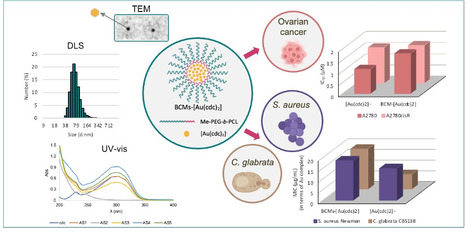



 Your new post is loading...
Your new post is loading...


